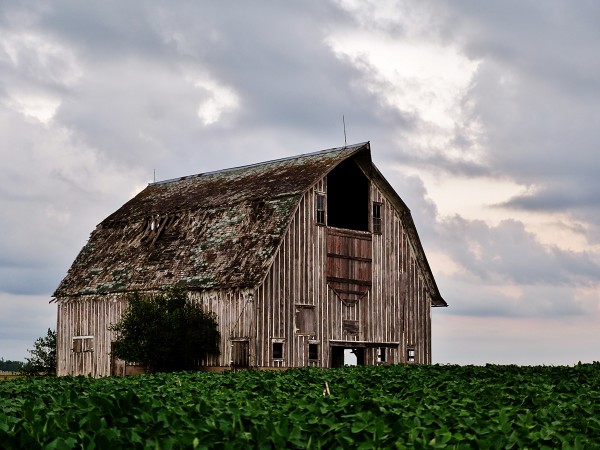By Arvid Huisman
While driving across Iowa in recent years I have noted a continuing decline in the number of barns. Once the monarch of every Iowa farmstead, the barn has given way to more efficient metal buildings and, in some cases, no out buildings at all.
Things change. As with threshing machines, windmills, the outhouse and the horse-drawn wagon in earlier years, the barn is rapidly becoming a part of our past. And that’s okay … I guess. Things change and we have to learn to change with them.
Still, I feel some sorrow for the loss of the barn. So much of what made a farm a farm for many decades centered on the barn.
My paternal grandparents farmed a few miles west of Titonka in northern Iowa’s Kossuth County. Until I was three, we lived near Opa and Oma’s farm and my earliest memories include their massive white barn.
That large barn was full of adventure. It’s where Opa kept his work horses, Spot and Daisy. It’s where Opa and my father and uncles milked a dairy herd twice a day. Where barn cats roamed freely. And where a large hay mow invited exploring.
For a farmer with dairy cows, the day began in the barn and usually ended there, too. I recall watching Opa’s cows, mostly Holsteins, enter the barn and walk directly to their stanchions, just as people always sit in the same pew at church.
Once hobbles were placed on the rear legs of the cows to prevent them from kicking milking was usually rather uneventful. Uncle Sterling could create some excitement when he grabbed a teat and squirted a stream of fresh milk directly at the delegation of barn cats which, wise to his tricks, gathered anxiously at a nearby door.
Opa was a devout man not known for strong language. A cow could swat him with her tail only so many times, however, before he bellered something in Low German that is best not translated into English.
Other barns have provided great memories, too. On many occasions I spent time on my Uncle Harold’s farm. One day, I walked into the barn while one of his dairy cows was being artificially inseminated. No one had ever told me of such things so you can imagine my bewilderment when I saw a man with his hand … well, you can imagine my bewilderment.
Uncle Stoffer had dairy cows, too, and I recall watching him milk at dawn while, over the noise of the milking equipment, the early morning news and markets from WHO Radio in Des Moines blared from an old wood-cased radio.
Barns came in many shapes and sizes. Uncle Irvin joked about the man who died in a round barn because “he couldn’t find a corner to pee in.”
Barns are splendid places for kids to play, though not necessarily the safest. My cousin and I enjoyed a dangerous pastime in her family’s barn. The rope which lowered and raised the large hay mow door was still attached to the open door. The heavy door was an excellent counterweight, allowing us to grab the rope close to the door’s opening near the roof and, upon jumping, lowered us gracefully to the floor of the hay mow. Of course, when we landed and let go of the rope the big door would slam down doing no good at all, I’m sure, to the door or its hinges.
In fact, after a number of exciting jumps my uncle came in and demanded that we stop … immediately!
TO READ MORE ABOUT THIS STORY AND OTHER FASCINATING STORIES ABOUT IOWA HISTORY, subscribe to Iowa History Journal. You can also purchase back issues at the store.

